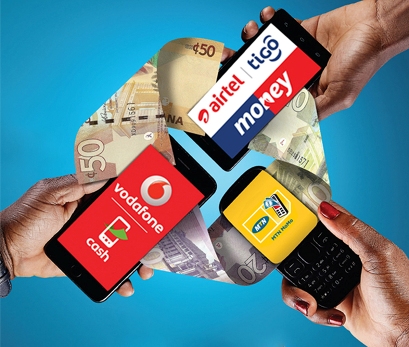
by Andrew Travis
Sub-Saharan Africa leads the world in mobile money transactions, but millions of Africans still
can’t open an account. Home to the world’s most dynamic mobile money ecosystem, the region
processed more than 70% of the world’s $1.26 trillion mobile money transactions in 2022. This
financial revolution is powered by telecom services like Kenya’s M-Pesa, Ghana’s MoMo, and
Nigeria’s Opay. These platforms allow people to send, receive, and store money on their SIM
cards. They have expanded access to financial services in areas that traditional banks have long
underserved. While the numbers might indicate a transformed continent, the reality is more
uneven and urgent. Women, rural communities, and displaced people across Sub-Saharan Africa
are still limited from participating in this digital revolution. Without smart, targeted policy
interventions, mobile money risks reinforcing the same inequalities it has the potential to solve.
Mobile money enables millions of cell-phone users to save, send, and receive funds without ever
entering a bank. It also allows micro-entrepreneurs to run businesses, farmers to access credit,
and families to receive remittances instantly. In Ghana, for example, more than 80% of adults use
mobile wallets like Momo. Throughout the region, mobile money supports agent networks and
tech startups, creating thousands of jobs.
Not everyone benefits equally. A study backed by the World Bank found that in Mali, only
14.69% of women had access to a financial institution or mobile money service in 2017, in
contrast with 25.64% of men. That gap is still an issue. In sub-Saharan Africa, women are 29%
less likely to use mobile internet than men. Over a quarter of adults with accounts
in Ethiopia say that they don’t use them because of confusion and mistrust of telecom companies.
These usage gaps result from barriers disproportionately affecting the poorest and most
vulnerable.
There are a few barriers that need to be addressed. The first obstacle is digital literacy, a problem
disproportionately faced by women and older adults. Even with access to mobile phones, users
can lack the confidence or skills to navigate mobile platforms. In countries like Ethiopia, the
challenge starts at early childhood development: a recent national assessment found that 56% of
second and third-graders were illiterate. These early education gaps leave adults unprepared for
basic digital tasks. Gender also plays a role. In much of Sub-Saharan Africa, women are less
likely to attend school, own a smartphone, or be taught how to use financial apps. Mobile money
platforms will continue to leave them behind without targeted digital education efforts.
The second barrier is the issue of infrastructure. Although urban areas benefit from dense and
robust mobile networks and electricity, many rural regions are still disconnected. In the
Democratic Republic of Congo, for example, more than 60% of the population lives without a
reliable mobile service. And still, when there is coverage, weak agent networks limit users’
ability to cash in or cash out their accounts. Energy is a critical limitation as well. Mobile
systems cannot function without electricity to charge phones or power agent kiosks. A model for
addressing the energy issue is the African Development Bank’s “Desert to Power” initiative,
which aims to bring solar energy to over 250 million people in the Sahel. Still, digital
connectivity needs to be explicitly integrated into similar programs if we want to unlock their
full potential.
And last but not least, there is the barrier of regulation. Most mobile money systems require
compliance with Know Your Customer (KYC) rules, which require formal identification.
However, many displaced people and informal workers don’t have national IDs. Countries like
Uganda and Nigeria have excluded thousands of refugees and undocumented people with strict
SIM registration mandates. These are the people for whom mobile money can serve the best.
There is technology that exists to fix this issue. Countries like Ghana have introduced tiered
KYC frameworks that allow low-risk users to open basic accounts with small amounts of money
and minimal identification. These types of systems help expand access while preserving financial
integrity. But there are still problems like political resistance and fears of fraud that have kept
broader adoption of these tiered frameworks from taking place.
What’s undeniable is that mobile money adoption is growing rapidly. There are governments,
telecom companies, and donors experimenting with new strategies to promote inclusion.
Rwanda’s Digital Ambassadors program trained local youth to teach digital skills in rural areas.
Both the World Bank and the UNDP have supported national financial inclusion strategies across
Africa. But these efforts are still fragmented and often don’t reach the “last mile.” In a lot of
cases, they reinforce the existing gaps by helping the already connected, educated, and
documented. There is room to do better.
If we want mobile money to live up to its promise, there needs to be a public-private push across
three fronts: digital literacy, infrastructure, and regulation. National governments and
development agencies must invest in scalable digital education, and rural networks and energy
expansion must be prioritized in infrastructure projects. Governments should adopt flexible,
risk-based KYC rules while allowing humanitarian IDs to bring the excluded into the system.
Mobile Money is a powerful tool for development in Sub-Saharan Africa, but technology alone
will not close the gap. It’s a policy challenge that requires vision, investment, and inclusion in its
design. Without addressing these issues, we risk building a digital economy as unequal as the one
it was meant to replace.
Andrew Travis is a School of Diplomacy student who participated in the UN Field Seminar course in the Spring 2025 semester.